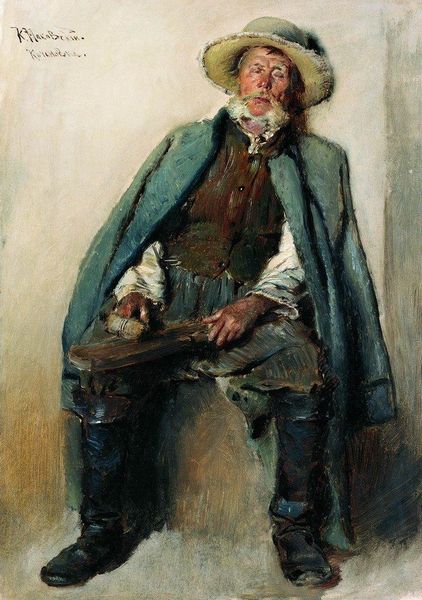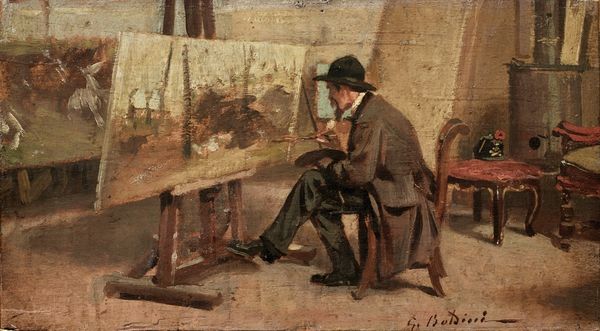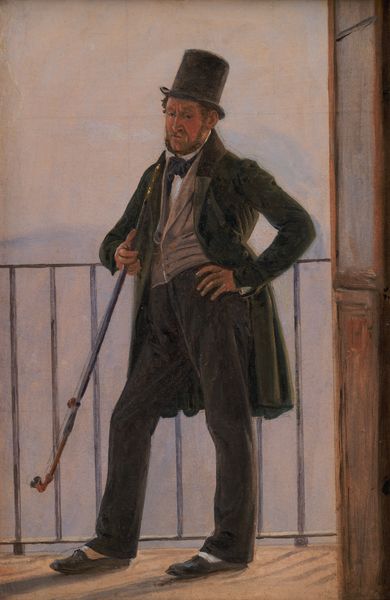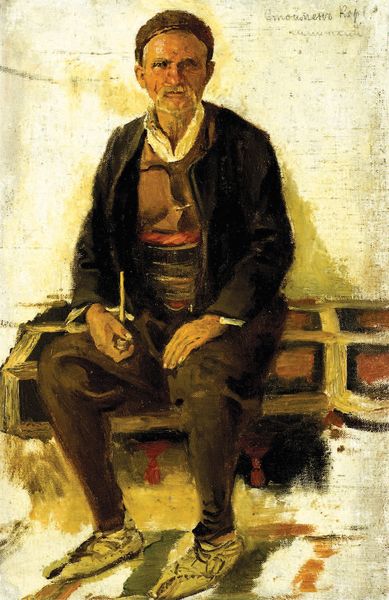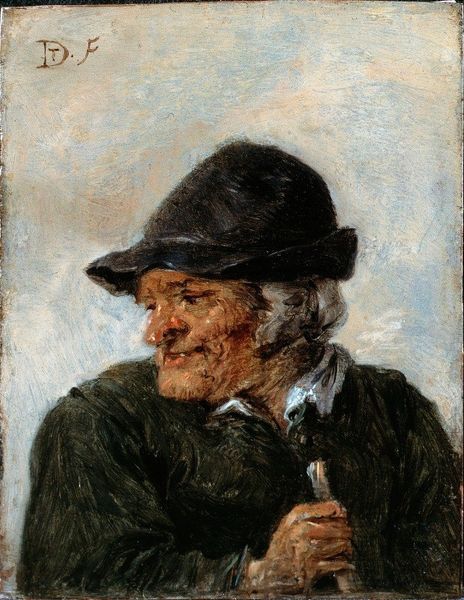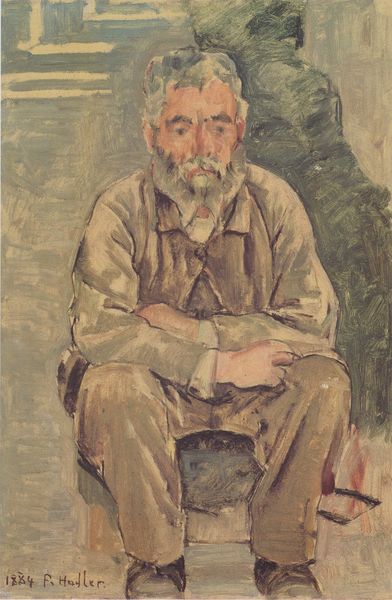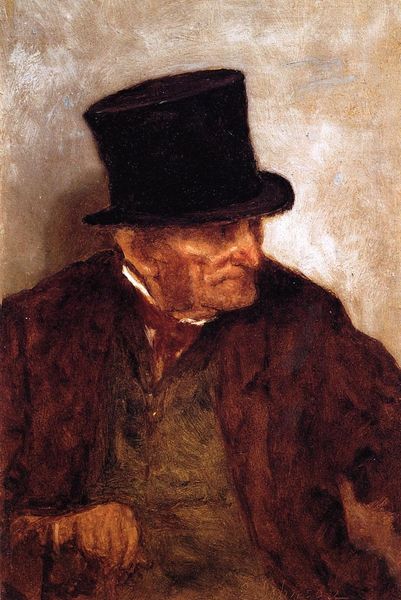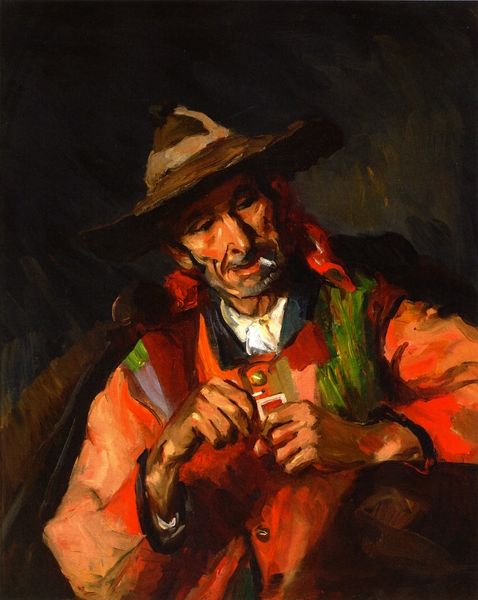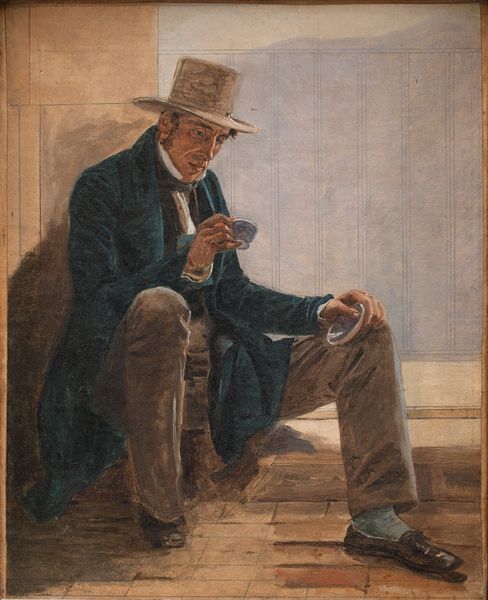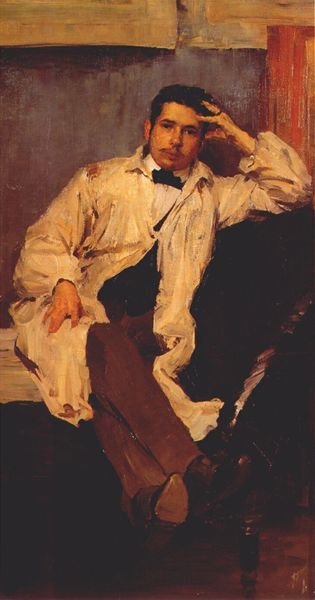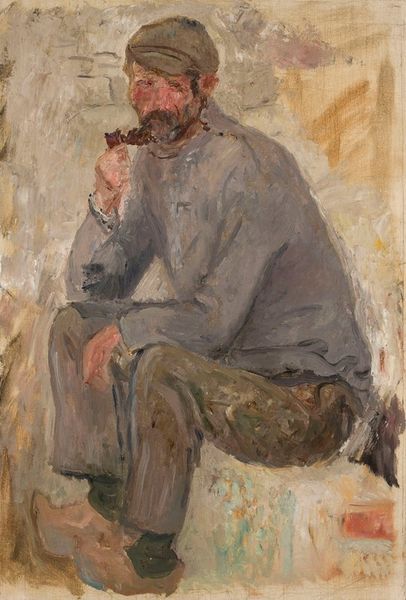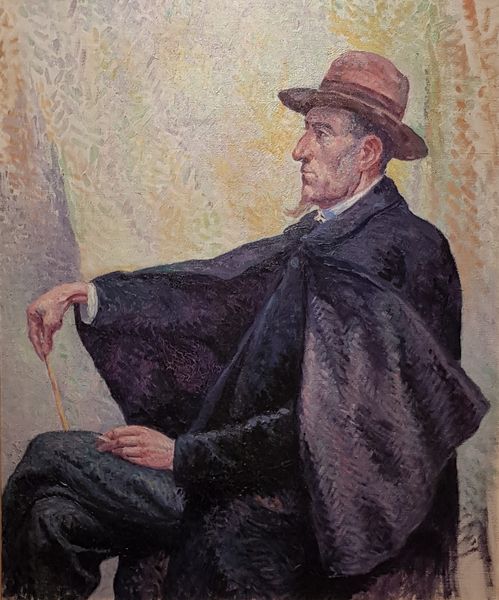
Dimensions: 24.5 x 19 cm
Copyright: Public domain
Curator: Here we have Vladimir Makovsky's "Portrait of a man sitting on a park bench," created around 1917. It's an oil on canvas painting currently held in a private collection. What's your immediate take on this one? Editor: My first thought is of worn textures – the bench's aged wood, the man's rumpled coat. You can almost feel the weight and drape of the fabric just by looking. Curator: Exactly! Makovsky masterfully conveys a certain world-weariness through his subject. Observe the details: the muted palette dominated by earth tones, reflecting melancholy. And even the park bench – a symbol of respite. The man's placement suggests someone caught in a reflective, almost detached state. Editor: Yes, the layering is key. The artist doesn’t smooth the oil but rather uses clear brushstrokes to render textures like wool or bark in visible, tangible detail. I am thinking about where he got those pigments at that time, and how much they might have cost. Curator: That’s a very relevant consideration! It's also significant, of course, that a figure like this – a bourgeois man in a hat - should be occupying the landscape traditionally reserved for the aristocracy in art. Consider what his presence says about shifting class dynamics. Editor: Absolutely. And thinking of the landscape - the open-air aspect. These impressionistic daubs depicting trees are crucial for how the painting portrays labour - it would be interesting to know if this painting was itself created *en plein air*. Curator: Good question! It feels immediate enough to be plausible. The painting definitely captures the mood and light of the park in that moment. The light filtering through those nearly bare branches becomes as much a character as the man himself. A poignant one at that. Editor: It's remarkable how much information is encoded through the surface of the materials themselves, rather than explicit details of subject. What initially feels like a very familiar image becomes complex, really. Curator: It speaks to the layers within each person too, right? The ways individual lives and their symbols weave together, leaving so much unsaid on the surface. Editor: And how those visible traces, through paint or aging fabric, give shape to historical forces themselves. Curator: A quiet encounter made all the more vivid through Makovsky’s chosen details and composition, wouldn't you say? Editor: Indeed. Seeing those textures makes me think deeply about who made them and with what kind of effort, not just what the image represents in a vacuum.
Comments
No comments
Be the first to comment and join the conversation on the ultimate creative platform.
